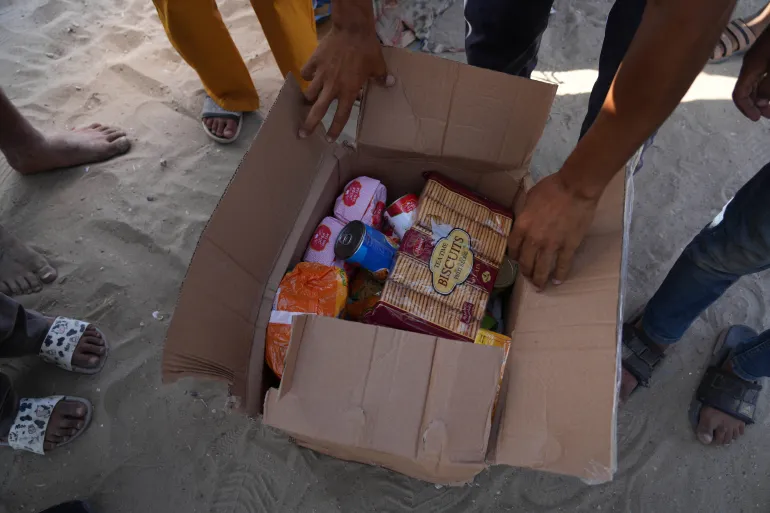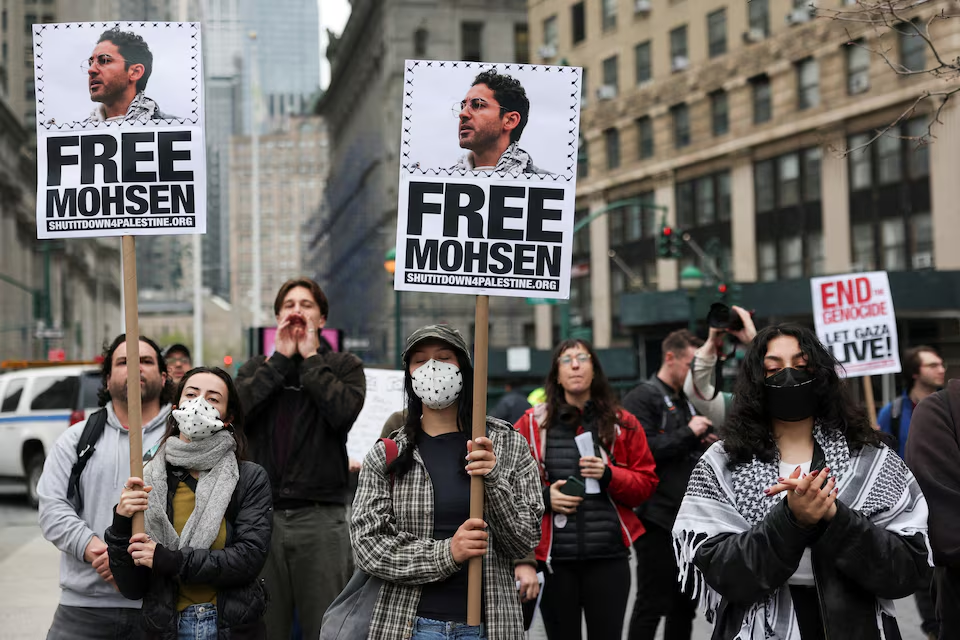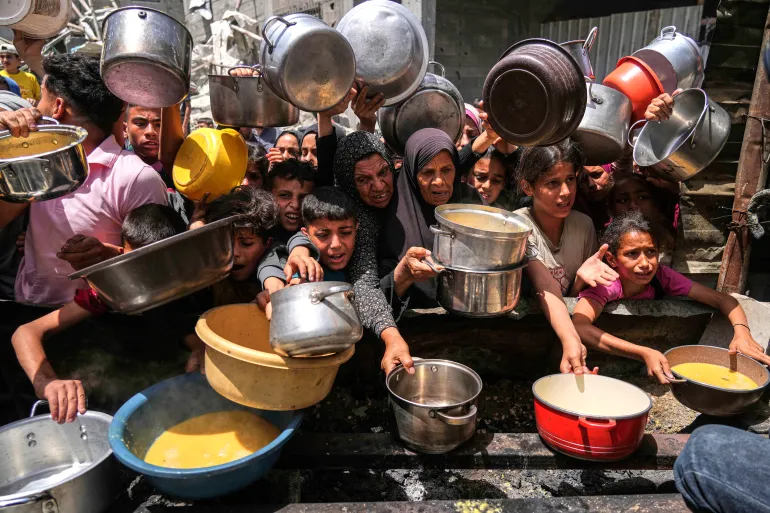Palestinians in Gaza are facing growing desperation and hunger as they struggle to access humanitarian aid delivered through joint efforts by the United States and Israel, according to local sources and international monitors.
The scene across the besieged enclave has been described as one of “heartbreaking chaos,” with residents scrambling for food amid a breakdown in orderly distribution and the collapse of critical services.
Aid Drops Met with Desperation
In recent days, US aircraft and Israeli authorities have coordinated airdrops and convoys carrying food, water, and medical supplies into Gaza. However, eyewitness accounts say the efforts have failed to reach many of those in urgent need.
“People are running after trucks, children are fainting in the streets from hunger,” said one resident in Rafah. “It’s chaos. There is no system, no protection, no guarantee we will get anything.”
Crowds have reportedly overwhelmed aid distribution sites, with reports of scuffles, injuries, and cases of people being trampled during desperate scrambles to retrieve basic supplies. Aid workers have called for better coordination and on-the-ground presence to manage the growing humanitarian crisis.
Humanitarian Collapse and Warnings
International organizations have repeatedly warned of famine-like conditions in Gaza. The United Nations and aid groups have emphasized that airdrops and border truck deliveries are insufficient given the scale of need, exacerbated by ongoing Israeli military operations and widespread displacement.
The World Food Programme estimates that more than 80% of Gaza’s population is facing extreme food insecurity, with children and the elderly most at risk. Hospitals are reportedly unable to cope with the influx of malnourished patients due to fuel shortages and damage to infrastructure.
Political and Operational Challenges
While the United States and Israel have pledged to increase aid access, humanitarian agencies insist that uninterrupted, large-scale ground deliveries are the only viable solution. “We need a ceasefire and full access for humanitarian convoys,” said a UN relief coordinator.
Israeli officials maintain that they are facilitating humanitarian aid while targeting what they describe as “terrorist infrastructure.” They blame Hamas for complicating the situation by allegedly diverting supplies or obstructing aid movement, a claim Hamas denies.
The United States, for its part, continues to push for improved mechanisms to ensure safe and efficient delivery of aid, with President Biden’s administration facing growing domestic and international criticism over the humanitarian fallout.
Civilian Toll and International Outcry
Images from Gaza show mothers holding malnourished children, makeshift kitchens built among the rubble, and displaced families sheltering in overcrowded UN schools. “We left our homes with nothing. Now we wait all day for one bag of flour,” said a woman in northern Gaza.
Global leaders and rights organizations have intensified their calls for a sustainable ceasefire and immediate access for international agencies. Protests in solidarity with Gaza have erupted in cities worldwide, demanding urgent action to prevent further deaths.
Conclusion
With no clear resolution in sight, the humanitarian situation in Gaza continues to deteriorate. The limited aid provided through current channels is being met with desperation and disorder, underlining the urgent need for a broader and more secure relief operation.
As starvation looms for thousands, the international community faces renewed pressure to prioritize the protection of civilians and uphold humanitarian law in one of the most vulnerable regions in the world.
Source; Al Jazeera



